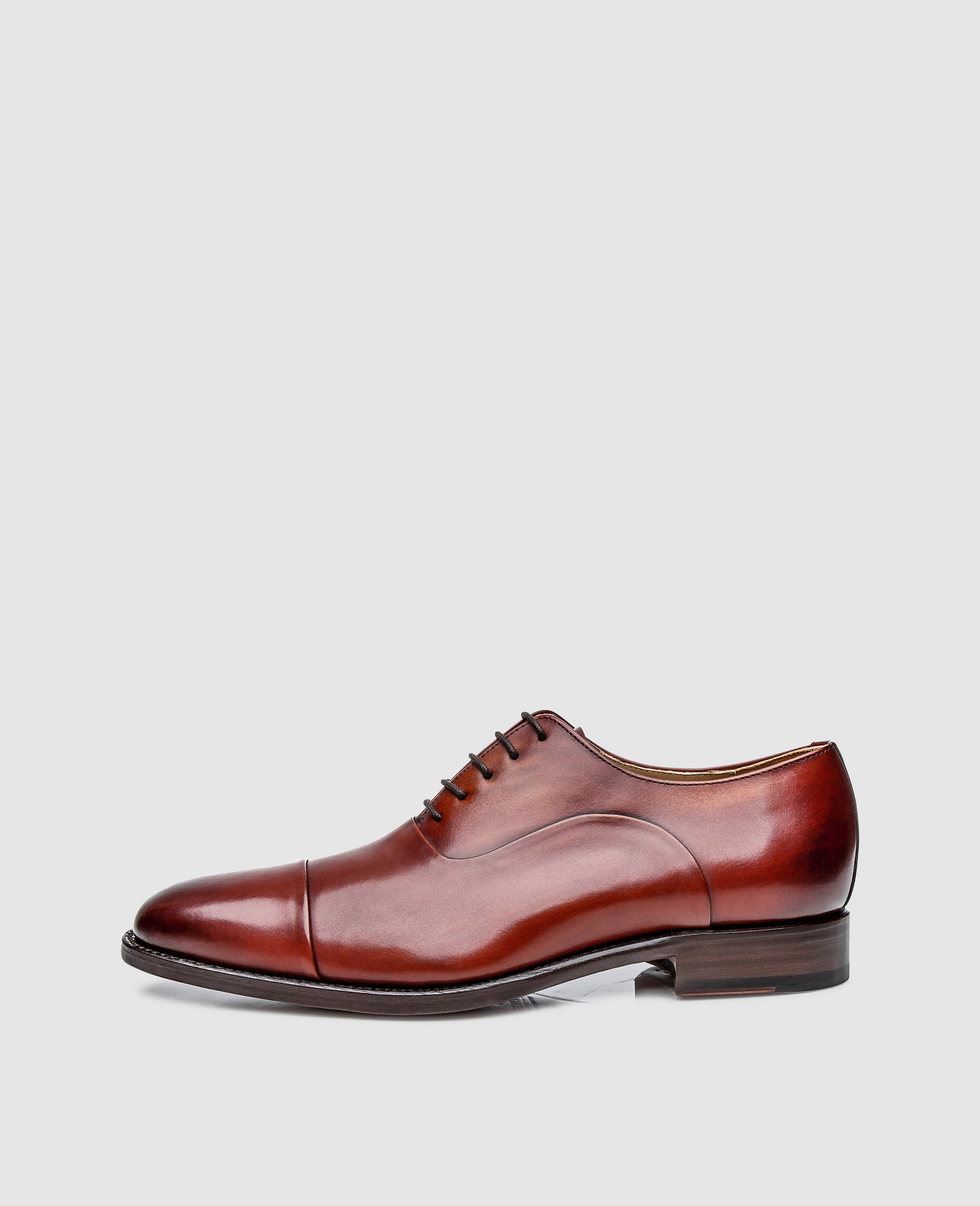ntempleman
Distinguished Member
- Joined
- Dec 19, 2014
- Messages
- 1,363
- Reaction score
- 2,740
That double monk looks like it was originally an upper for a different, wider a last, pressed into new service
STYLE. COMMUNITY. GREAT CLOTHING.
Bored of counting likes on social networks? At Styleforum, you’ll find rousing discussions that go beyond strings of emojis.
Click Here to join Styleforum's thousands of style enthusiasts today!
Styleforum is supported in part by commission earning affiliate links sitewide. Please support us by using them. You may learn more here.
For the height of quarters on lace ups, would it be ideal to have it as close to the ankle malleolus as possible? but not too close as Jesper pointed out, can lead to painful experiences. Or else why don’t makers just cut the quarters as low as they are loafers, as it would never be a problem?
That double monk looks like it was originally an upper for a different, wider a last, pressed into new service
Yeah could definitely be the case, looking at all parts of the pattern. Got to save money everywhere you can ?
I was always surprised that not only didn’t Simon mention anything about it in his original post about those shoes, he decides to highlight them again and not talk about it at all there either. I mean, even if he might not be a “shoe expert” (based on how he writes about shoes in many cases), one thought he would catch this as something not properly made.


Does anyone know if there's a specific term for when the stitches joining the seams on the uppers are hidden? Is it a French stitch or ladder stitch or somesuch.
I post here because this seems the right place to put my question.
I like to work on my shoes' heels, to make them nice and glossy.
In this I am taking shameless advantage of the advice @DWFII gave on this and other threads, of the book "" by R.A. Salaman he mentioned, and of the books he took the chore to transcript and publish on his site thehcc.org .
Recently I treated myself to a heel iron i found on ebay, which has a flatter top compared to the rounder one of other irons I already have
I'm thinking to sand the head, to get rid of some small dents and have it perfectly smooth.
Anyway, I'm unable to understand the purpose of the notch you can see on the left side of the head.
Can the expert cordwainers explain?
Thank you.
Yes, it is.@DWFII , thank you so much for your sincere answer.
I asked because in Salaman's book several examples of heel iron are shown, with and without step, but even there I could not find an explanation.
Anyway it is a true gold mine of informations even for the amateur.
and can it be expected to flatten out with some wear ? (The shoes are unworn)
 LuxeSwap Auction - Vintage Antique United States Naval Navy Denim Deck Jacket A piece for denim heads, vintage collectors, streetwear enthusiasts and menswear enthusiasts alike, this extremely rare early US Naval issued deck jacket in raw denim is not likely to ever show up at auction again anytime soon. A Haleys Comet of menswear items, offered at auction at a $9.99 starting bid with no reserve.
LuxeSwap Auction - Vintage Antique United States Naval Navy Denim Deck Jacket A piece for denim heads, vintage collectors, streetwear enthusiasts and menswear enthusiasts alike, this extremely rare early US Naval issued deck jacket in raw denim is not likely to ever show up at auction again anytime soon. A Haleys Comet of menswear items, offered at auction at a $9.99 starting bid with no reserve.  Kirby Allison - Luxury Suit Hanger - $32 Kirby Allison's Luxury Wooden Suit Hangers protect your suits from stretched collars and droopy shoulders. Our wooden suit hangers provide five-times more support than average hangers and will protect and extend the life of your most important garments.
Kirby Allison - Luxury Suit Hanger - $32 Kirby Allison's Luxury Wooden Suit Hangers protect your suits from stretched collars and droopy shoulders. Our wooden suit hangers provide five-times more support than average hangers and will protect and extend the life of your most important garments.  LuxeSwap Auction - Vintage Antique United States Naval Navy Denim Deck Jacket
A piece for denim heads, vintage collectors, streetwear enthusiasts and menswear enthusiasts alike, this extremely rare early US Naval issued deck jacket in raw denim is not likely to ever show up at auction again anytime soon. A Haleys Comet of menswear items, offered at auction at a $9.99 starting bid with no reserve.
LuxeSwap Auction - Vintage Antique United States Naval Navy Denim Deck Jacket
A piece for denim heads, vintage collectors, streetwear enthusiasts and menswear enthusiasts alike, this extremely rare early US Naval issued deck jacket in raw denim is not likely to ever show up at auction again anytime soon. A Haleys Comet of menswear items, offered at auction at a $9.99 starting bid with no reserve.
 Wellington Chore Boot - Special Introductory Price! $495
Introducing the latest addition to Nicks Handmade Boots collection: The Wellington Chore Boot. Engineered for the rigors of daily tasks, this boot is more than just footwear; it's a reliable companion for your everyday adventures. Crafted with convenience in mind, its effortless pull-on design ensures you're always ready to tackle whatever the day throws your way.
Wellington Chore Boot - Special Introductory Price! $495
Introducing the latest addition to Nicks Handmade Boots collection: The Wellington Chore Boot. Engineered for the rigors of daily tasks, this boot is more than just footwear; it's a reliable companion for your everyday adventures. Crafted with convenience in mind, its effortless pull-on design ensures you're always ready to tackle whatever the day throws your way.